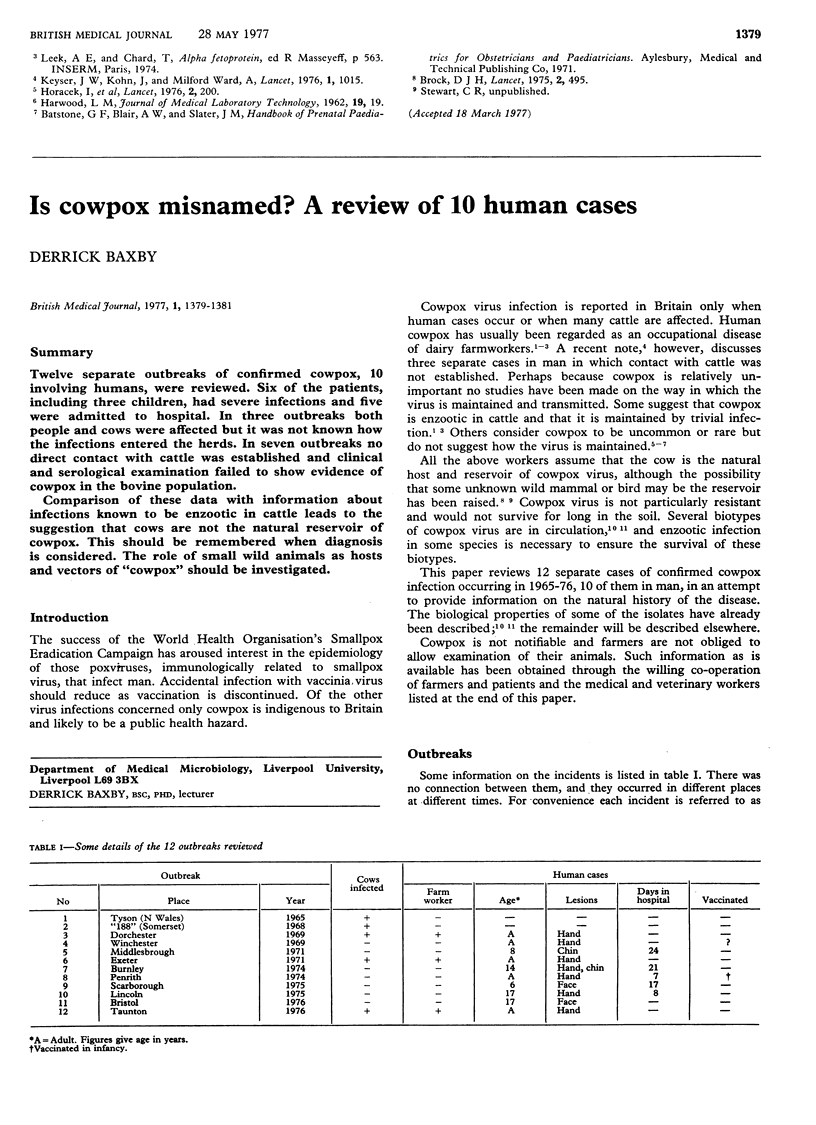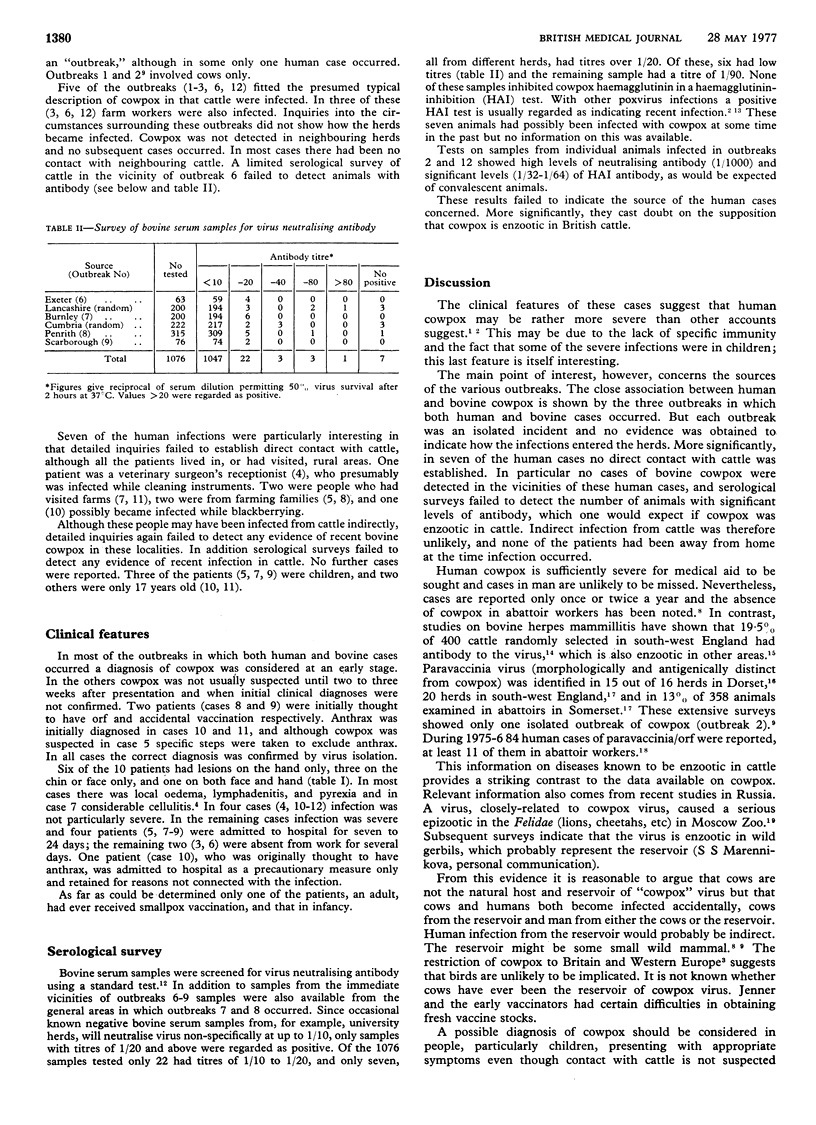Abstract
Twelve separate outbreaks of confirmed cowpox, 10 involving humans, were reviewed. Six of the patients, including three children, had severe infections and five were admitted to hospital. In three outbreaks both people and cows were affected but it was not known how the infections entered the herds. In seven outbreaks no direct contact with cattle was established and clinical and serological examination failed to show evidence of cowpox in the bovine population. Comparison of these data with information about infections known to be enzootic in cattle leads to the suggestion that cows are not the natural reservoir of cowpox. This should be remembered when diagnosis is considered. The role of small wild animals as hosts and vectors of "cowpox" should be investigated.
Full text
PDF


Selected References
These references are in PubMed. This may not be the complete list of references from this article.
- BOULTER E. A. The titration of vaccinial neutralizing antibody on chorio-allantoic membranes. J Hyg (Lond) 1957 Dec;55(4):502–512. doi: 10.1017/s0022172400037414. [DOI] [PMC free article] [PubMed] [Google Scholar]
- Baxby D. Correspondence: Epidemiology of cowpox. Vet Rec. 1975 Apr 26;96(17):388–388. doi: 10.1136/vr.96.17.388-a. [DOI] [PubMed] [Google Scholar]
- Baxby D. Laboratory characteristics of British and Dutch strains of cowpox virus. Zentralbl Veterinarmed B. 1975 Aug;22(6):480–487. doi: 10.1111/j.1439-0450.1975.tb00613.x. [DOI] [PubMed] [Google Scholar]
- Gibbs E. P., Johnson R. H., Osborne A. D. Field observations on the epidemiology of bovine herpes mammillitis. Vet Rec. 1972 Oct 21;91(17):395–401. doi: 10.1136/vr.91.17.395. [DOI] [PubMed] [Google Scholar]
- Gibbs E. P., Osborne A. D. Observations on the epidemiology of pseudocowpox in South-west England and South Wales. Br Vet J. 1974 Mar-Apr;130(0):150–159. doi: 10.1016/s0007-1935(17)35937-7. [DOI] [PubMed] [Google Scholar]
- Lauder I. M., Martin W. B., Murray M., Pirie H. M. Experimental vaccinia infection of cattle: a comparison with other virus infections of cows' teats. Vet Rec. 1971 Nov 27;89(22):571–578. doi: 10.1136/vr.89.22.571. [DOI] [PubMed] [Google Scholar]
- Marennikova S. S., Maltseva N. N., Korneeva V. I., Garanina V. M. Pox infection in carnivora of the family Felidae. Acta Virol. 1975 May;19(3):260–260. [PubMed] [Google Scholar]
- McCARTHY K., DOWNIE A. W., BRADLEY W. H. The antibody response in man following infection with viruses of the pox group. II. Antibody response following vaccination. J Hyg (Lond) 1958 Dec;56(4):466–478. doi: 10.1017/s0022172400037979. [DOI] [PMC free article] [PubMed] [Google Scholar]
- Murhead R. H., Burns K. J. Tuberculosis in wild badgers in Gloucestershire: epidemiology. Vet Rec. 1974 Dec 14;95(24):552–555. doi: 10.1136/vr.95.24.552. [DOI] [PubMed] [Google Scholar]
- Nagington J., Tee G. H., Smith J. S. Milker's nodule virus infections in Dorset and their similarity to orf. Nature. 1965 Oct 30;208(5009):505–507. doi: 10.1038/208505a0. [DOI] [PubMed] [Google Scholar]
- Rweyemamu M. M., Johnson R. H., Laurillard R. E. Serological findings in bovine herpes mammillitis. Br Vet J. 1969 Jul;125(7):317–325. doi: 10.1016/s0007-1935(17)48858-0. [DOI] [PubMed] [Google Scholar]


